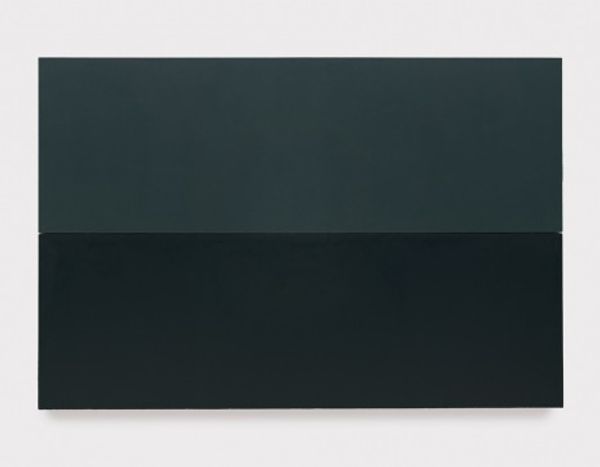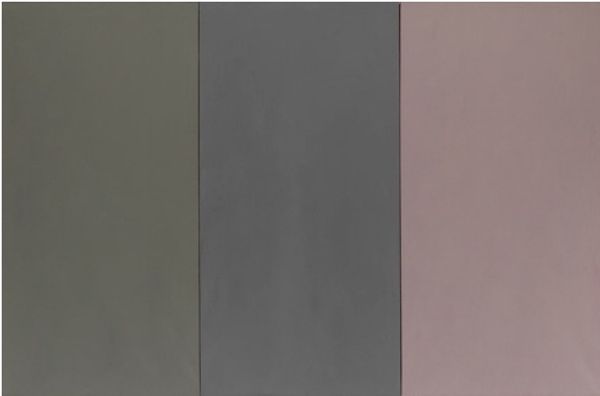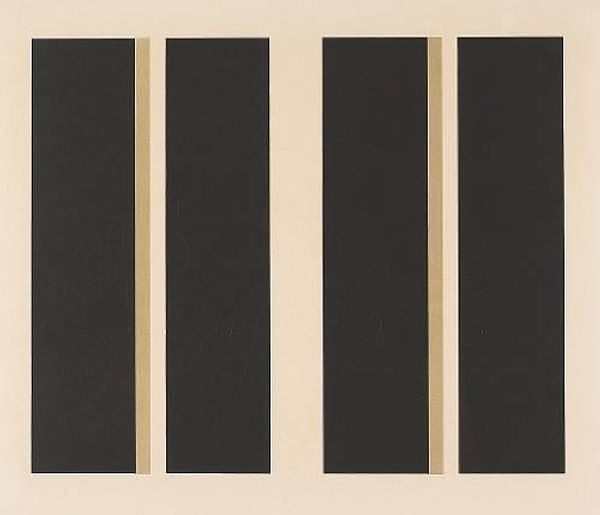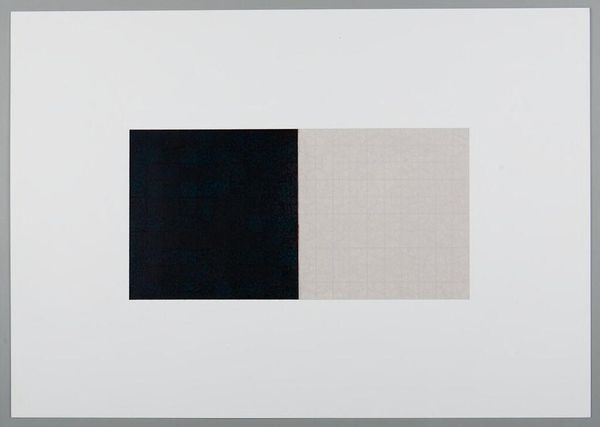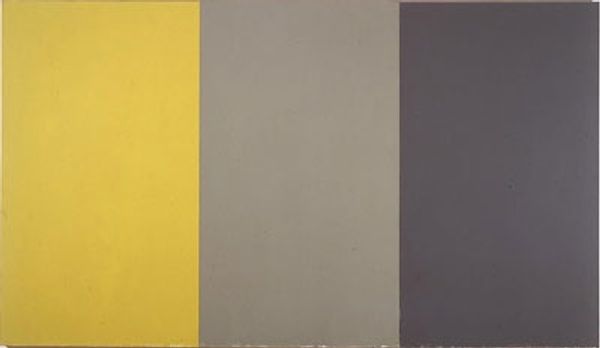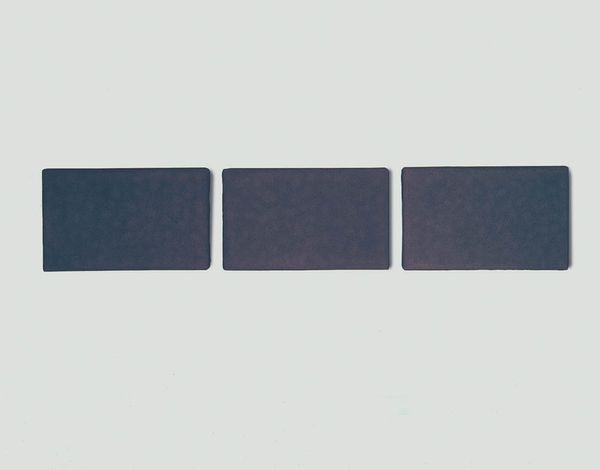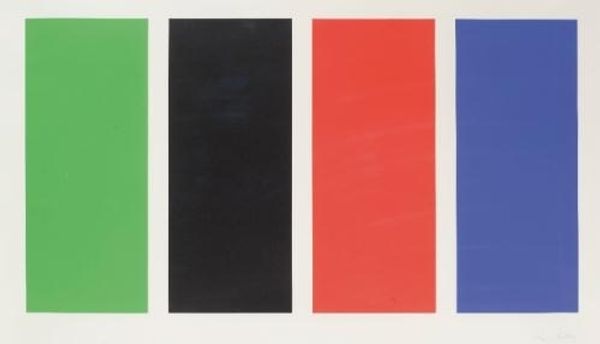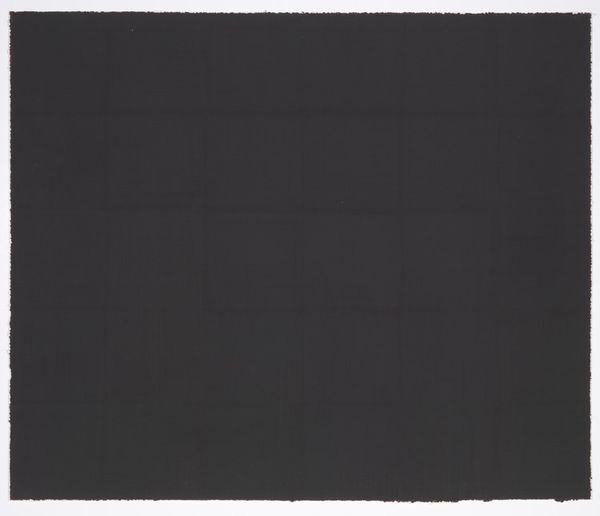
Copyright: Brice Marden,Fair Use
Curator: Brice Marden's "Green Study," an oil painting created in 1982, confronts us with subtle variations within a seemingly limited palette. What strikes you first? Editor: There’s a certain tranquility here. Four adjacent monochrome panels seem to absorb light, each possessing a slightly different tone. Almost meditative in its stillness. Curator: Marden, of course, positions himself within the discourse of modernism, particularly minimalism and abstract expressionism. This pursuit of pure form begs questions of identity politics, challenging notions of monolithic identity, and instead, gesturing towards intersectionality and fluid, contextual experience. Editor: Absolutely. The progression of greens from nearly black to almost blue evokes a powerful symbolic transition. The dark could represent the unknown, the shadowed aspects of the self. The subtle shift towards blue signifies the emergence of clarity. Curator: Color field painting often operates in this emotional register, drawing heavily from the viewer's subjective perception. Marden, however, wasn’t interested in pure expression; instead, his art is rigorously self-aware, influenced by thinkers such as Barthes and Derrida. Do you feel there’s a social commentary here, or does the pure formalism limit it? Editor: No, it is not simply about the beauty of the color or form; each section could mirror individual memories or cultural motifs evolving over time. The placement invites our gaze and beckons a cultural recall; you can easily lose yourself contemplating each rectangle. Curator: I agree that “Green Study” embodies a visual dialogue between minimalism and social commentary. It prompts discussions about boundaries and the fluidity of meaning, questioning any universal truth. Editor: Indeed. There's a silent language in these shifts in hue, almost a story being told without words. Each panel acts like an emotional landscape, quietly beckoning a narrative. Curator: Thank you. Considering the critical theory landscape of the early 1980s, it offers a compelling point of contemplation for its audience. Editor: I see it as an example of art’s uncanny ability to create enduring and transformative meaning, even in its quietest of manifestations. Thank you.
Comments
No comments
Be the first to comment and join the conversation on the ultimate creative platform.
